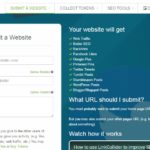Content is king in digital marketing. It might sound cliché, but this maxim still holds true. If you’re a digital marketer, you appreciate how versatile content marketing is and why it has to be part of your marketing mix.
But does all content convert? Is it all about quantity? There’s a lot of content being generated out there but unfortunately, much of it is not hitting the mark. If you’re producing a lot of content but you have nothing to show for it, it’s time to carry out a content gap analysis. This helps know whether you’re communicating with your target audience.
Identifying the gaps in your existing content can make all the difference for your marketing campaign. This is the first step in finally leveraging this powerful marketing tool. It’s a powerful tactic used by Brew Interactive marketing agency to boost your content marketing campaign.
This post explores the content gap, how to identify and plug these gaps and why it matters for your digital marketing strategy.
What’s a Content Gap?
As a marketer, it’s easy to assume that you fully understand what your target audience wants. Many marketers drive their campaigns using high-quality content but with no positive outcomes. This is a pointer that there’s a gap between the content and the desired results.
The content gap can exist in:
- Keyword gap: If there are some valuable keywords for which you don’t rank on SERPs and your competitors do, this is a clear gap in your content. You’re missing out on immense opportunities to drive traffic to your site and boosts sales
- Lack of relevant information: This is a major content gap where your target audience would like to find crucial information on your platforms but you don’t have these. You lose potential leads because of such gaps
- Marketing channel gap: If your target audience is on a certain channel and you’re not marketing your content there, this is another example of missed opportunities
The Importance of Content Gap Analysis
Identifying content gaps is a proactive activity which the marketer has to initiate as part of the digital marketing campaign. If you’re not getting the desired content marketing outcomes, it’s time to review what you’re not doing right.
Most likely, there are content gaps in your strategy. For this process, you analyse multi-channels including your website, blog, landing pages, social media, email and any other content you own.
To identify any content gaps, carry out a comprehensive content gap analysis. This helps determine how well your content solves your target audience’s questions. The analysis identifies instances where your content doesn’t provide value and you can then start remedying such weaknesses.
The content gap analysis also identifies opportunities to reach audiences more effectively. In the flurry of activities involved in digital marketing, it’s easy to overlook some people you should be targeting.
This process can also help identify crucial topics and types of content you haven’t included in your existing content.
After identifying the content gaps, you can work with the best digital marketing agencies to come up with custom content or revise the existing material. If you don’t analyse your existing content, there’s a risk of leaving out entire audiences or investing in promotion of content which your customers don’t want.
The content gap analysis process helps you understand what your customers actually want. You avoid missing opportunities for engagement, conversions and building lasting relationships with your customers.
In summary, content gap analysis helps:
- Find new topics
- Optimize your content for better results
- Beat your competition to new niches and sub-niches
- Meet customers’ needs at each stage of the buyer’s journey
- Drive valuable traffic to your website by identifying high-value content opportunities
- Improve search visibility for new topics
Tips for Effective Content Gap Analysis
Now that you appreciate the importance of content gap analysis, it’s time to get down to work. How do you successfully analyse existing content, identify the gaps and plug them? Here are a few effective steps:
Content Audit
You can only manage what you know and this is why a content audit is essential. Check your content against the customer’s lifecycle in your business. What type of content are you providing and at which point? Is it effective or ideal for that stage?
Talk to Your Audience
What better way to understand the right content than talking to the target audience? This is a great step for customer engagement and it gives you the right answers on everything to do with content from the format, length, topics and much more. Use surveys to engage with your audience and communities for the best feedback.
Competitor Analysis
What are your competitors doing better in terms of content? Try running a backlinks report on your competitors to see the content that’s generating the most traffic for them. Do you have any such content? What can you do better?
Leverage Monitoring Tools
There are innovative tools to help you monitor what’s trending in your industry against the type of topics, and keywords you’re targeting. Leverage these tools to always tweak your content to fill any gaps for better outcomes.
Wrapping Up
promises high ROI, higher engagement, better ranking on search engine result pages (SERPs), more traffic, better conversion rates, and helps you establish E.A.T. With the right content, you can build brand awareness, and you have multiple formats from video, blogs, infographics, white papers, podcasts, webinars, email to interviews, and more. But for you to leverage content, identify the content gaps and seal them promptly.





Pingback: How To Choose A Digital Marketing Agency In 7 Easy Steps - LinkCollider - Blog